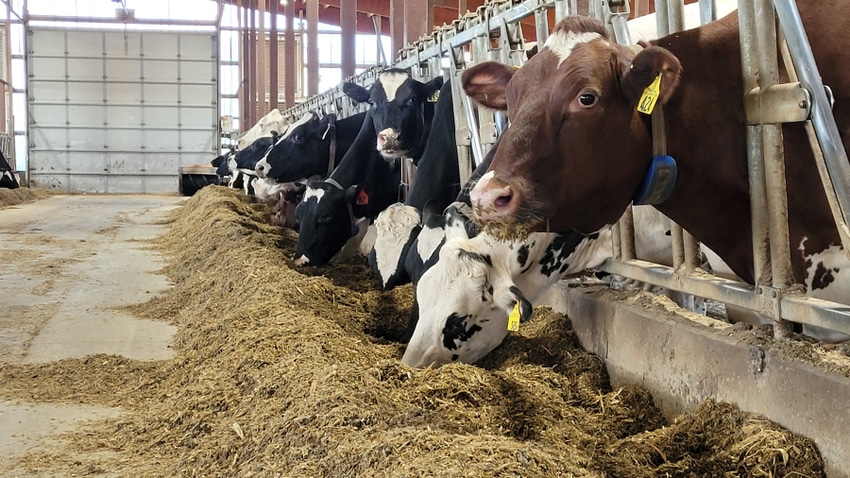October 4, 2023

by Lyssa Seefeldt
Earlier in the year, I attended the Four-State Dairy Nutrition and Management Conference, where many of the topics focused on transition cow care. One of the big take-home points from more than one speaker was that prevention of clinical disease is vital for long-term success of your cows. Issues during the transition period are associated with reduced reproduction and milk production. Prevention is followed closely by early diagnosis of clinical disease issues.
This sounds like common sense, but how do we ensure that we catch cows that are at risk for disease early?
Transition period quality is key for the future production of a cow, not just for the current production cycle. A 40- to 50- day dry period and a 3.0 to 3.5 body condition score at dry-off is ideal. Maintaining that BCS through calving is critical for the health of the cow. Once the cow calves, she should lose one BCS or, ideally, less while maintaining her intake.
Avoiding metabolic disease
Once the cow or heifer calves, you want her to avoid clinical disease incidence. Avoiding metabolic diseases such as milk fever or ketosis is especially important. Other disease issues you want to avoid include retained placentas, metritis, mastitis, respiratory issues (such as pneumonia), digestive problems and lameness.
The collective effect of clinical disease can have a significant impact on the cow. In a retrospective study of more than 5,000 cows by Carvalho et. al, by 305 days in milk, almost 50% of cows are affected by clinical disease. However, most problems happen very early in lactation: 40% of cows were affected by 60 days in milk, and 30% at only 21 days in milk. While most clinical diseases are resolved quickly, long-term consequences are seen beyond the current lactation. Decreased lactation and reproductive performance are seen, along with increased culling rates.
When we look at 305 days in milk, about 800 pounds of milk are lost with one disease incident. Around 1,550 pounds of milk are lost if there are multiple disease incidents. These numbers actually represent an underestimation of the milk lost, as cows in the study that left the herd before 100 days in milk did not contribute to the data set used to calculate the 305 days in milk. The reduction in milk was shown in second-lactation and greater cows, as well as first-calf heifers.
Genetic potential reduced
Another study was conducted to investigate if the difference in milk production had anything to do with genetics. About 2,400 first-lactation cows were genotyped for this study. This allowed the research team to predict the amount of milk these animals could produce in the first lactation. After calving, these cows were classified either as having clinical disease or having no incidence of disease in the first 21 days.
No differences were detected in the predicted ability of these animals to produce milk. However, when the research team ran the numbers for the actual production, they found a decrease of 750 pounds of milk in the animals that experienced clinical disease. This means that a cow that has experienced disease has now reduced her genetic potential to produce milk.
Because we know effective transition management is critical for long-term farm sustainability, focusing on strategies that help effectively navigate the transition period generally has a good return on investment. This may include using anionic salts or zeolites in prepartum diets, rumen-protected choline, amino acids, vitamins, organic or hydroxy trace minerals, and fatty acids.
Seefeldt is the regional University of Wisconsin-Extension agriculture educator for Chippewa, Dunn and Eau Claire counties.
You May Also Like




